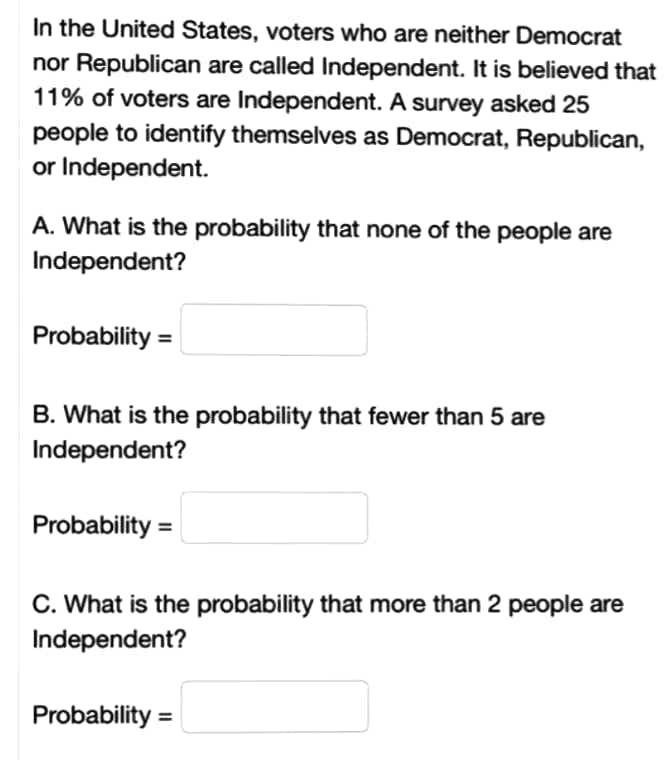In the United States, voters who are neither Democrat nor Republican are called Independent. It is believed that 11% of voters are Independent. A survey asked 25 people to identify themselves as Democrat, Republican, or Independent. A. What is the probability that none of the people are Independent? Probability = B. What is the probability that fewer than 5 are Independent? Probability = C. What is the probability that more than 2 people are Independent? Probability -
In the United States, voters who are neither Democrat nor Republican are called Independent. It is believed that 11% of voters are Independent. A survey asked 25 people to identify themselves as Democrat, Republican, or Independent. A. What is the probability that none of the people are Independent? Probability = B. What is the probability that fewer than 5 are Independent? Probability = C. What is the probability that more than 2 people are Independent? Probability -
Chapter8: Sequences, Series,and Probability
Section8.7: Probability
Problem 4ECP: Show that the probability of drawing a club at random from a standard deck of 52 playing cards is...
Related questions
Question

Transcribed Image Text:In the United States, voters who are neither Democrat
nor Republican are called Independent. It is believed that
11% of voters are Independent. A survey asked 25
people to identify themselves as Democrat, Republican,
or Independent.
A. What is the probability that none of the people are
Independent?
Probability =
B. What is the probability that fewer than 5 are
Independent?
Probability =
C. What is the probability that more than 2 people are
Independent?
Probability =
Expert Solution
This question has been solved!
Explore an expertly crafted, step-by-step solution for a thorough understanding of key concepts.
This is a popular solution!
Trending now
This is a popular solution!
Step by step
Solved in 4 steps with 4 images

Recommended textbooks for you

